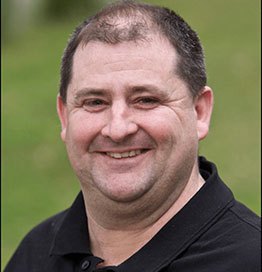
By Grahame Grieve
Interoperability is a hard problem; it’s important to understand that it’s about information management, and it’s about people.
It’s not actually a technology problem – even though people use the word ‘technology’ a lot in respect to solving the issues we face around interoperability. But it’s not a technology problem, it’s a people problem, and an information management problem. Technology comes and goes. Information management is where the hard stuff is.
In my role as FHIR product director, I talk about interoperability a lot, and about FHIR. I realise that a lot of people misunderstand what Fast Healthcare Interoperability Resource (FHIR) is – yes, it’s got technology in it, but it’s not so much about technology. FHIR is really two important things – a community of people, and a set of agreements about information management and exchange.
The really valuable thing FHIR has is people and the culture that it helps people build. It’s a culture of sharing and openness and it’s starting to transform healthcare IT around the world.

The FHIR standard and the FHIR community don’t exist to deliver solutions to any real world problems, they exist to enable other people to do it. Our job is to get IT out of the way. The challenge then, and the biggest challenge by far, is developing the right story, the right solutions and actually deploying this stuff.
When I set out on the FHIR journey I had three goals in mind:
- To disrupt and force change on healthcare IT standards – that’s mostly in the bag.
- To disrupt and force change on healthcare IT- that’s on going.
- To disrupt and force change on health itself- that’s starting.
There are three stages to the journey that we’re on.
The first is getting the basic capabilities into international standards. These are platform standards that we can build solutions on.
But there are all sorts of solutions- informatics, theory, international collaboration. And they can all be used differently, so…
The second stage is to take those standards and say “this is what we’re going to do with them here in this context.”
This is a set of agreements that we can run, in our smaller local communities where we have much more to agree about (as compared to what everyone in the world can agree on collectively). We need to work with how our systems work and work together as a group of people to figure out what these local guidelines or rules should be, test them, and integrate that process into a standards cycle that is sustainable.
The third phase is to actually turn those local agreements into operating software, operating market agreements – things that actually work and are available to our providers. That can transform how we do health.
Around the world FHIR is scoring goals in the first and second stages, but it’s the third stage that’s the hardest stage, by a long shot. And the challenge, for me, is that each of these stages means different people, different culture, different processes, and the handover between stages causes a lot of noise and potential disconnect. Getting continuity to try and run the process to the ground in each local community is the hard part, and it’s increasingly our focus.
I’m afraid I believe that in Australia, we’re starting at the back of the pack:
We’ve had a working standards process in the past, but we don’t currently.
We’ve had some consensus in the community in times gone past, but we don’t now (or, at least we don’t have it well enough established again).
We’ve launched this interoperability journey repeatedly for a number of years (maybe we missed a year here and there).
What we need is belief that we collectively can get it properly moving and solved.
If you look at the history of interoperability, the great interoperability technology and techniques tend to be invented primarily in four countries – USA, Russia, China, and Australia. In health, in fact, Australia has dominated the creation of interoperability technologies and techniques for decades (e.g. openEHR then FHIR).
But if you look around the world at countries that have actually taken those assets and made them work, they’re small countries. They’re the ones that can work together to drive the technology home into working solutions. Despite what some people say, it’s not actually about size. It’s about culture.
The very best countries in the world that are driving interoperability home are; Latvia, Lithuania and Estonia. Why? A big part is because they look over their border, and they see Russia. They have a burning problem in their minds, and it helps them focus on collaborating.
It feels like there is an inherent challenge in Australian culture because when we look around, we don’t see a burning problem, something to create a sense of fear for the future of our system. And so we don’t drive coordination, collaboration and consensus building.
Our challenge is finding reasons to be properly worried about what will happen if we don’t collaborate and get interoperability done here fast and efficiently.
In the face of our culture problem, where do important things like trust and collaboration start?
The Australian Digital Health Agency have it right when they say we need transparency and openness, and we need that underpinned by solid governance, demonstrated in practice, that people have confidence in, so that people know that they can take it to the bank.
The approximate size of the commercial ecosystem downstream that is denominated by FHIR, is a trillion US dollars. So FHIR, and the organisations around it have to deliver a trillion dollars’ worth of governance!
How much confidence do people have in Australia’s governance processes right now? I’m hearing that it’s not that high.
One of the prices of an open transparent community, that has really good governance, is that no one is fully in control of the outcomes. That’s really, really hard in lots of countries around the world – to create a community that you put a lot of trust in, but then you let go of the outcomes.
If you don’t let go of any outcomes, why would anyone participate? One reason they might still, is that they are forced to or told to. But that’s not going to work in most modern Western economies these days.
In one country recently, I had dinner with the digital healthcare decision makers in that country. They asked me over to decide whether they were going to use FHIR. The next day I walked around the conference they had asked me to, wearing my FHIR shirt. And I had all these junior programmers coming up to me going “Oh we love FHIR! We use it everywhere! But don’t tell the bosses!”. Top down processes are limited. Consensus matters. And you have to let go of some parts of the process to get that. It’s hard.
If all of this sounds a bit negative it’s not meant to.
I can’t tell you how many people laughed at me when I started working on FHIR, saying “it’s doomed”, and “you have no idea what you’re doing”. Sometimes it’s necessary not to have any idea of what you’re trying, otherwise you wouldn’t do it.
Interoperability can be done. It has been done elsewhere already.
But we have to face up to the issues and roadblocks that we face in Australia and start navigating our way around them. I think it means that someone is going to have put their necks out and say “I’m going down with this project if it fails”. And at times other people may need to run cover on the brave souls who do this, even if they fail. No one wants to fail. But failure is part of this process.
Who will commit to saying “this is what we want to do, and my reputation is totally on the line.”?
A really big part of building trust is having someone who can’t just disappear and who commits to saying – “I’m in here for the long haul and I need this to work.”
The key for anyone who does do this is that they have the right narrative. Or, that they can tell a good story. And by good, I mean real and compelling.
Every country has a different solution to building a community. And that is their story. Anyone wanting to change the status quo here is going to need to tell the right story. In some parts of the world they need somebody rich and famous to make it happen. In other parts of the world, somebody rich and famous is the least useful thing you could possibly have. In India we were trying to figure out how to build a story around interoperability based on self-denial and self-sacrifice so that they can link the challenge of interoperability to challenges faced by Mahatma Gandhi. In Argentina we were trying to figure out how to build a story of interoperability as that wild crazy cowboy out in the bush, breaking all the rules, because that’s what they respond to in Argentina.
What’s going to be our story in Australia?
Because the story matters a lot.
People are inspired by a good story to pursue goals with greater intent they can relate to and they will freely share their enthusiasm and the story itself.
In the end all interoperability is about cost shifting. Everybody wants to shift costs to somebody else, without actually shifting the matching income to somebody else. When you set out on a technical solution that will shift costs, you don’t know exactly how far the costs are going to shift, but you have to spend the money regardless.
This is another ongoing challenge. If the benefits are intangible, and inestimable, and yet you have to actually spend hard money to make it happen, who is going to let you spend that money?
Most often you spend government’s money, because in many ways it is the role of governments to spend money with these types of risks and rewards attached to it. When we criticize government so much, for big projects of uncertain value and outcomes, we should remember that if that money doesn’t happen then nothing happens.
I often hear people criticizing government, all around the world, for spending money without any idea of what the outcomes are. But who else will do this?
These are some of the challenges we face, but we have solved these problems elsewhere, and we all know why it’s so important to solve these problems in Australia and crack interoperability properly.
It was never going to be easy. But it is entirely worthwhile. It requires commitment and sacrifice from all parts of the community and health ecosystem.
FHIR is building public treasure that everybody owns. The goal is that everybody gets richer because everybody owns this treasure. I say to everyone in our digital health ecosystem: please spend some of your own time helping to build this public treasure – whether it’s in the FHIR community, or somewhere else, because we will all be richer personally as more people in our community contribute to our shared treasure.
(Developed from Grahame Grieve’s speech at the Launch of the Australian Digital Health Agency Interoperability Program on March 18 in Sydney)
Wild Health Insights Promotional Code for our upcoming one day summit on interoperability in Australia is WHIR1. To use, just click the link below, click the green tickets button and enter the code in the top right hand corner. The code gets you a 15% discount of the Early Bird rate on all ticket types.
EARLY BIRD TICKETS to Wild Health Summit on interoperability in Sydney on June 25 HERE

